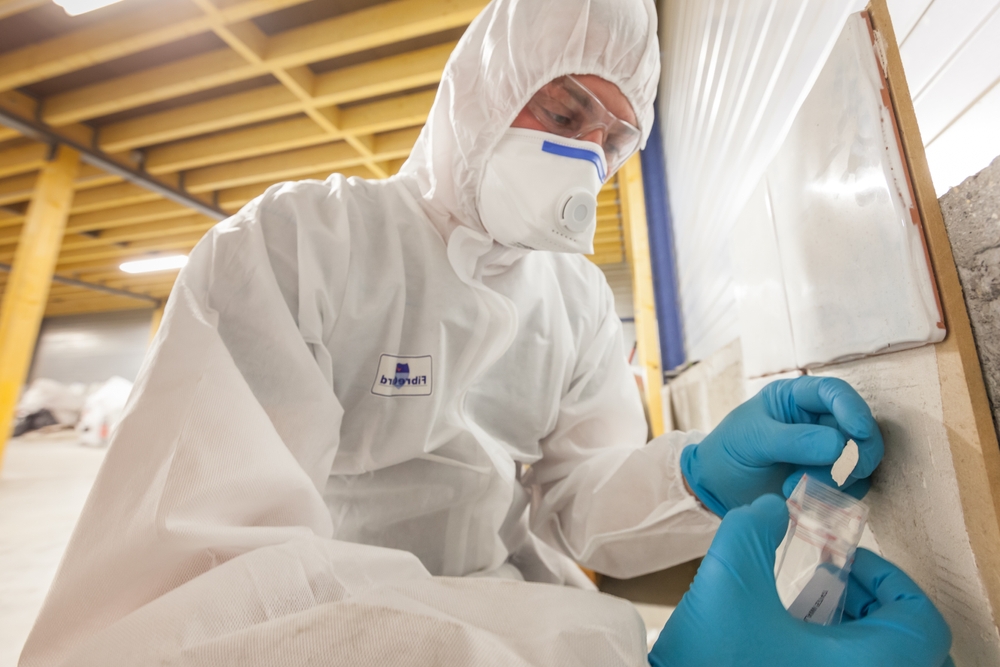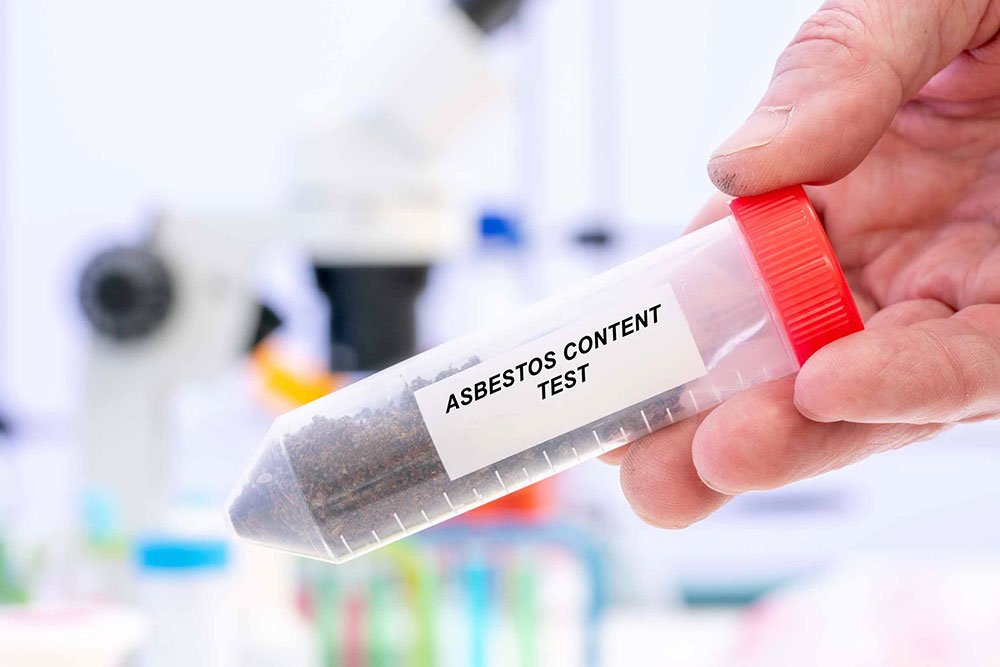Affordable Asbestos Testing: Secure Your Residential Or Commercial Property from Hidden Dangers
Affordable Asbestos Testing: Secure Your Residential Or Commercial Property from Hidden Dangers
Blog Article
The Full Refine of Accredited Asbestos Examining to Make Sure Building Conformity
In the realm of home administration and compliance, the process of recognized asbestos screening stands as an essential element to make sure the safety and wellness of residents. Recognizing the complex steps associated with this screening method is vital for homeowner and managers alike. From the first assessment to the last analysis of outcomes, each stage plays a vital role in establishing the presence of asbestos within a property. Allow's discover just how this precise procedure unravels to guarantee adherence to rigid guidelines and protect versus prospective carcinogen.
Accredited Asbestos Testing: Preliminary Evaluation
In conducting the first evaluation for accredited asbestos testing, a careful assessment of the residential property's materials is important to accurately determine possible asbestos-containing materials. This critical action entails aesthetically checking all locations of the property, including ceilings, wall surfaces, floor covering, insulation, and other structure products that may harbor asbestos. Unique focus is given to products that are vulnerable to damage or disruption, as these circumstances can release harmful asbestos fibers into the air. Furthermore, sampling of presumed materials may be essential to confirm the presence of asbestos via lab analysis.
Approved asbestos assessors comply with strict procedures established by governing bodies to make sure the precision and reliability of the screening procedure. By thoroughly recording findings and using advanced screening techniques, assessors can provide homeowner with a detailed report detailing the existence of asbestos, if any kind of, and the advised actions for mitigation or elimination. This first evaluation establishes the structure for subsequent activities to attend to asbestos problems and ensure the safety and conformity of the residential property.
Example Collection Treatments for Asbestos Evaluating
Reliable example collection treatments are crucial in guaranteeing precise asbestos screening outcomes and compliance with regulatory requirements. When collecting samples for asbestos screening, it is critical to comply with rigorous methods to lessen the danger of contamination and make sure the integrity of the outcomes.
Firstly, it is necessary to identify the presumed asbestos-containing products (ACMs) and focus on tasting areas based on variables such as the material's condition, ease of access, and capacity for disturbance. Asbestos Testing. Examples ought to be gathered from various places within the building to give a thorough evaluation of asbestos visibility
During sample collection, accredited specialists ought to use appropriate personal protective tools (PPE) to protect versus asbestos direct exposure. They should utilize tidy devices, such as disposable gloves and plastic bed linen, to avoid cross-contamination between examples. Examples need to be thoroughly collected using a specified technique, such as wet wiping or coring, and securely sealed in closed containers to preserve their integrity throughout transportation to the laboratory for analysis.
Research Laboratory Evaluation Refine for Asbestos Examples
Upon completion official source of the sample collection procedure, the asbestos examples are thoroughly carried to accredited research laboratories for precise evaluation. At the laboratory, educated technicians manage the samples with severe treatment to stop any type of cross-contamination or sample deterioration. The very first step in the laboratory evaluation process is sample prep work, where the collected samples are thoroughly refined to extract the asbestos fibers. Asbestos Testing. This step is critical to ensure accurate outcomes in the subsequent analysis.

Once the analysis is complete, a detailed report is produced, detailing the searchings for and verifying whether asbestos is existing, the kind of asbestos fibers identified, and the focus degrees. This info is crucial for building proprietors to take the needed actions to guarantee compliance with asbestos regulations and safeguard the health and wellness of passengers.

Reporting and Interpretation of Asbestos Test Outcomes
Certified asbestos screening labs supply in-depth reports that provide important insights into the visibility, kind, and focus levels of asbestos fibers found in samples collected from properties. These reports are vital for property proprietors and supervisors to recognize the risk positioned by asbestos and make notified decisions concerning its administration or removal. The reports normally consist of details on the methods used for screening, the areas where examples were taken, the Source kind of asbestos determined (such as chrysotile, amosite, or crocidolite), and the concentration levels of asbestos fibers detected.
Analyzing these results needs experience to examine the potential wellness risks linked with asbestos direct exposure, figure out the appropriate training course of action, and make certain governing compliance (Asbestos Testing). Depending upon the findings, suggestions might range from continued monitoring and maintenance to encapsulation or complete asbestos reduction. Residential or commercial property owners should meticulously assess these records and speak with asbestos professionals to develop a detailed prepare for resolving any kind of asbestos problems recognized
Ensuring Building Conformity With Asbestos Rules
To preserve adherence with asbestos regulations, residential property owners must carefully execute procedures to make sure compliance with suitable regulations and guidelines. This includes carrying out regular asbestos examinations by certified experts to identify any type of visibility of asbestos-containing products within the building. As soon as asbestos is identified, homeowner must follow asbestos management plans that outline appropriate control, removal, or encapsulation procedures to avoid direct exposure and spread of asbestos fibers. Compliance also includes maintaining detailed records of asbestos screening, upkeep, and removal tasks for evaluation functions.
Residential property proprietors should supply asbestos awareness training to workers and owners to minimize the threat of asbestos direct exposure and ensure proper handling of products that may contain asbestos. Additionally, it is essential to stay educated regarding any kind of updates or changes in asbestos policies to adjust management methods accordingly. By proactively attending to asbestos compliance requirements, homeowner can create a risk-free atmosphere for passengers and minimize possible lawful and wellness risks related to asbestos direct exposure.
Conclusion
To conclude, recognized asbestos screening is a critical process for ensuring residential or commercial property compliance with regulations. The first assessment, example collection treatments, lab evaluation, and interpretation of results page are all essential steps in this process. By complying with these procedures, residential property owners can identify and attend to any kind of asbestos dangers present, securing the health and wellness of passengers and maintaining conformity with regulatory needs.
Report this page